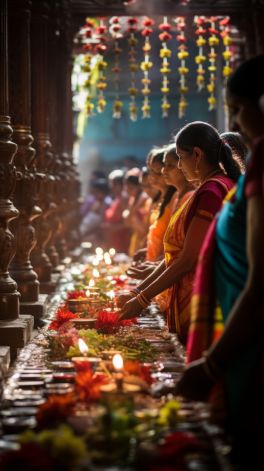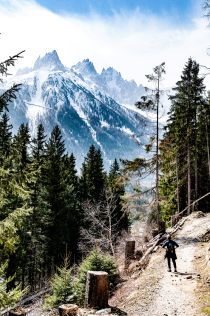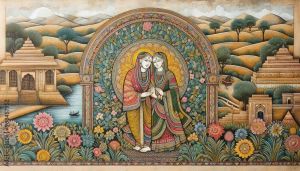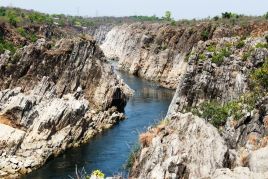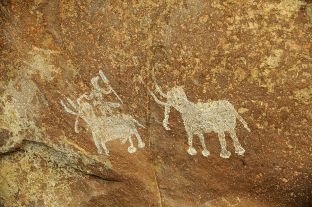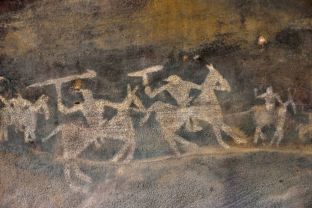
Kangra fort is a historically significant ancient fort in the Kangra district of the Himachal Pradesh state in India. The fort is the largest and one of the oldest forts in the Indian Himalayan range. It is believed to have been constructed by the Katoch dynasty in the 4th century BC.

Kangra -an ancient fort in the lap of Himalayan valley where history of centuries-old conquests sleeps…
Himachal Pradesh, a state in the Himalayan range of India boasts a rich heritage, encompassing historical monuments, religious sites, and a vibrant culture. Its main heritage sites include the UNESCO World Heritage Site Great Himalayan National Park, the Kalka-Shimla Railway, and the historic Kangra Fort.
Kangra fort is a historically significant ancient fort in the Kangra Valley, Himachal Pradesh, protected by archaeological department govt of India. The fort is popularly known as ‘Nagarkot’ and ‘Kot Kangra’.
This fort is one of the largest and oldest for in the Himalayan valley. It is situated on a hillock between two rivers Manjhi and Banganga among the foothills of the Dhauladhar range.
Kangra was once an important center of Jainism. The ancient remains or relics inside the fort are of Jain and Hindu temples dated to c. 9-10 century A.D.The earliest mention about kangra fort in the records dates back to the time of invasion of the fort by Mahmud Gazni in 1009 AD. Later the fort was seized by Muhammad bin Tughlug in 1337 AD. and succeeded by Firuz Shah Tughlug in 1351 A.D. respectively.
The structural characteristics of kangra
The Kangra Fort is spread across 463 acres in the Himalayan valley. The entrance to the fort is through a small courtyard enclosed between two gates. It is believed that this area was built during the Sikh period, as depicted by an inscription over the entrance. Soon the entrance area may lead to a long and narrow passage further pointing to the top of the fort, through the Ahani and Amiri Darwaza built by Mughals.
About 500 feet from the outer gate the passage turns round at a very sharp angle and passes through the Jehangiri Darwaza.
The Darsani Darwaza, which is now flanked by defaced statues of River Goddesses Ganga and Yamuna gave access to a courtyard, along the south side of which stood the stone shrines of Lakshmi-Narayana and Ambika Devi and a Svetambara Jain temple with large idol of Rishabhanatha
The myths & history surrounding Rishabanada Jain temple of kangra fort
The Jainist temple of the fort has to unveil a curious and enchanting myth or tale. According to a local legend, King Susarmacandra, came to know about the significance of Mount Shatrunjaya, and later he took a vow to not eat or drink anything until he pays homage to Rishabhanatha at Palitana temples. It is believed that immensely pleased by the king’s devotion and determination and to save him from his vow to starve, demigoddess Ambika created a temple of Rishabhanatha at the king’s fort. After paying homage to the idol, the king broke his fast.
Within the premises of Kangra Fort lies an idol of Rishabhanatha. The inscription on the pedestal of the idol is in Sarada script. It mentions that the idol was consecrated by Jain sect Svetambara monk Amalacandra, a disciple of Acarya Abhaycandra in 854 CE.
The granite idol of Rishabhanatha is seated in Padmasana posture. An icon of bull carved on its pedestal indicates that the idol is of Rishabhanatha. However, another noteworthy feature of this idol is that it does not show a waistband and a waistcloth, as most commonly found in Svetambara [Jainist monks] icons of Tirthankaras after Bappabhattisuri’s era.Locks of hair carved on both sides of the head of the idol as well as an inscription from 854 CE, however, substantiate that the idol and the temple is of the Svetambara sect of Jainism as noted by archaeologist Sir John Marshall.
It is an astonishing fact that, this ancient bustling Jain centre fade into oblivion after migration of Jainas out of the town. The idol of Rishabhanatha was found in the Indresvara Temple. Later on, efforts to reinstall the idol were made by Svetambara Jaina nun Mrugavati. After many decades, in 1978, the idol was installed in an independent shrine within Kangra Fort. Currently, the idol is under the supervision and control of the Archaeological Survey of India. However, it is maintained as a Jain temple and Jain devotees are given the right to worship the idol.
History of Kangra fort – story of invasions & siege by Mughals & retrieval by katoch dynasty
It is the largest fort in the Himalayas and probably the oldest dated fort in India. The Kangra Fort was built by the royal Rajput family of Kangra State the Katoch dynasty, which traces its origins to the ancient Trigarta Kingdom, mentioned in the Mahabharata epic. Later years witnessed invasion by Muslim rulers in their conquest of the subcontinent which lasted many centuries.
The earliest recorded reference to the Kangra fort dates from the time of this fort’s invasion by Mahmud Ghazni in 1009 A.D. The fort was captured by Muhammad bin Tughluq in 1337 A.D., and by his successor Firuz Shah Tughluq in 1351 A.D. respectively. Khawas Khan Marwat, a superior General of Sher Shah Suri, managed to capture the fort in 1540 AD.
Raja Dharam Chand submitted to the Mughal Ruler Akbar in 1556 and agreed to pay tribute, including, renouncing claims to the fort. The fort of Kangra resisted Akbar’s siege in 1615. However, Akbar’s son Jehangir successfully subdued the fort in 1620, forcing the submission of the Raja of Chamba. Mughal Emperor Jahangir with the help of Suraj Mal garrisoned with his troops.
In 1620, Emperor Jahangir, killed that Katoch king, Raja Hari Chand and annexed the Kangra kingdom into the Mughal Empire. Under the leadership of Nawab Ali Khan and aided by Raja Jagat Singh, the fort was captured in 1620 and remained under Mughal rule until 1783. In 1621, Jahangir visited it and ordered the slaughter of a bullock there. A mosque was also built within the fort of Kangra. However, the Katoch Kings repeatedly looted Mughal controlled regions so as to weaken the Mughal control over the region in their relentless effort to be back in power in their own land.
The the decline of Mughal power inevitably happened and Raja Sansar Chand-II succeeded in recovering the ancient fort of his ancestors, in 1789. Maharaja Sansar Chand fought multiple battles with Gurkhas on one side and Sikh King Maharaja Ranjit Singh on the other. The Fort remained with the Katochs until 1828 when Ranjit Singh annexed it after Sansar Chand’s death.
The fort was finally taken by the British during the First Anglo-Sikh war after a six-week long siege. This siege was fought from mid-April to 28 May 1846. Sir Henry Lawrence reached the fort on 3 May 1846. This was the only battle fought between the Sikh forces of Kangra and the British. The British controlled the valley after defeating them and the fort. A British garrison occupied the fort until it was heavily damaged in an earthquake on the 4th of April, 1905.
Location
The Kangra Fort is located 20 kilometers from the town of Dharamsala on the outskirts of the town of Kangra, in the Kangra district.
Currently, this ancient fort[ built in 4th century] is well- maintained and well-preserved by Archaeological survey of India, with lush green lawns and exquisitely beautiful stone pavements. Visitors of kangra fort can walk over the sandstone and granite pathways experiencing the grandeur of huge walls surrounding the fort where the history of the fort is unravelled by inscriptions and sign boards. On passing over five gates of ancient architectural styles, walking over the stone pavement you may reach the temples of kangra fort. A few of them are in dilapidated condition due to an earth quake happened in this region many years ago. However you can see the walls of ancient temples and sculptures.
The fort is located over a hillock surrounded by innumerable trees of the Himalayan valley and rivers. As you ascend through the pavements to the higher elevations you may get a fantastic, breathtaking and ethereal view of azure blue sky and lush green Himalayan valley surrounding the fort. If you are a traveller with a bend to ancient history as I am this is a perfect location for delving into the past & rich heritage of the subcontinent.
How to reach kangra fort?
By air:
Gaggal airport is the nearest airport to Kangra Fort, located at a distance of only 14 km from Kangra valley. This airport is connected to Delhi through frequent flights
By train :
The nearest broad gauge railway station is Pathankot Cantt. (Chakki) at a distance of 87 km from Kangra and nearest narrow gauge railway station is Kangra mandir railway station
By bus:
Distance between New Delhi to Kangra is 471km. You can take overnight Volvo buses or can hire a taxi
written by dr sanjana p souparnika
For further reading
